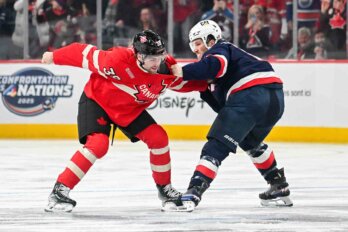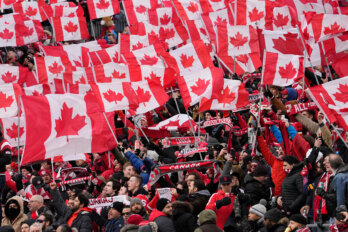The best photo of Muhammad Ali—perhaps the best photo in the history of sports—was taken on May 25, 1965. Ali has just knocked out Sonny Liston, who’s sprawled out on the canvas, two minutes into the first round of their championship bout. The fight’s over, but Ali’s face and body remain full of menace. “Get up and fight, sucker!” he’s yelling.
Anger and defiance are magnetic qualities in a sports hero. Jose Bautista didn’t win our hearts with a smile, but with a scowl and a bat flip. The grinning hero is an overgrown boy made good. But the embittered hero, in his moment of triumph, gets to be something more. His victory becomes an act of insurgency against some unspoken prejudice or oppression.
In team sports, these insurgency narratives are based on geography. (“By an insane act of psychological projection, I imagined in [Bautista’s] face a defiant posture of social justice,” I wrote last Fall, after attending Game 5 of the American League Division Series in Toronto.) But in individual competition, it’s more complicated. When French figure skater Surya Bonaly struck defiant postures against her sport’s corrupt, inbred, lily-white establishment—including a legendary, illegal backflip at the 1998 Olympics—this innovative black athlete was striking a blow not on behalf of France, but on behalf of all those aesthetic heretics who lay outside the sport’s cult of dainty, feminine grace.
Ali’s tribe was everyone who wanted in on America’s anti-white, anti-Christian, anti-draft culture war. (The name “Muhammad Ali” was an invention of Nation of Islam leader Elijah Muhammad, a man who believed white people were an evil offshoot race of the original homo sapiens.) Ali’s boxing career arose at a moment in the early Cold War when a critical mass of Americans were hungry for this kind of countercultural anti-hero: Dean Moriarty from Jack Kerouac’s On The Road, Clint Eastwood as the “Man with No Name” in A Fistful of Dollars, the lionized jailbirds of Johnny Cash. At his most transcendent moments, Ali was their great philosopher warrior.
In doing so, he made other sports heroes seem uninteresting. When Ali massacred Liston in 1965, the incumbent NFL MVP was the all-American, fantastically bland Johnny Unitas—a man who smashed all sorts of records, but whose imprint on our broader culture is non-existent. The same is true of more recent alphas such as Joe Montana, Wayne Gretzky, Roger Federer, Jack Nicklaus, Larry Bird, and Bobby Orr. The most inspiring sports heroes are revolutionaries who prove their moral claim to supremacy by vanquishing conventional opponents—like Odysseus mowing down Penelope’s false suitors at Ithaca. But today’s sports champions become placid pitchmen for the existing corporate order even before they retire.
In our hearts, we like our heroes poor—or at least born poor, or with a hardscrabble heart—so that we may recast his success as an insurgency against class. (Ali’s father painted billboards. His mother was a maid.) In soccer, we never tire of the humble-form child who arises, barefoot, from slum sandlots to lead his nation to World Cup glory. These heroes, we imagine, are powered by some authentic, ancestral tribal spirit imprinted upon their sporting soul early in life—like the Canadian hockey greats who supposedly all learned the craft on frozen ponds, thick magazines wrapped around their shins. Or in the fictional realm of Rocky, where the working-class fighter draws deep into his American-working class roots to confront a succession of unscrupulous phonies.
More than anything, we demand that our sports heroes overcome something. One of the most inspiring moments I ever experienced as a sports fan came on September 17, 1993, when I watched from the cheap seats at Olympic Stadium as a deaf journeyman outfielder named Curtis Pride got his first major-league hit—a pinch-hit two-run double to the gap in left-centre that knocked in two runs. We gave the guy a five-minute standing ovation. Which he couldn’t hear.
The problem with any sports insurgency is that someday the insurgency ends—with the erstwhile rebel in a mansion, surrounded by toadies and accountants. The angry outsider is now part of the establishment, like those once-angry rappers who now make Christmas albums and take cameo roles in kids’ movies. Part of the genius and tragedy of Muhammad Ali is that he didn’t go in much for that—in part because of disease. He died on Friday. But his real story ended forty years ago.
There can never be another Muhammad Ali. While cultural and racial insurgencies still exist—witness the Black Lives Matter movement—they no longer exist in the world of sports, where ruthlessly fan-friendly corporate professionalism rules the day. Many athletes aren’t even trusted with their own Twitter accounts.
While the racism and class warfare of mid-century America was a terrible thing to behold, the social tension of the period created a legacy of sports heroism that will never be matched. As in that famous photo from 1965, Ali towers over everyone else in spirit, the very epitome of the man we want our sports heroes to be—but which they shall never again become.





